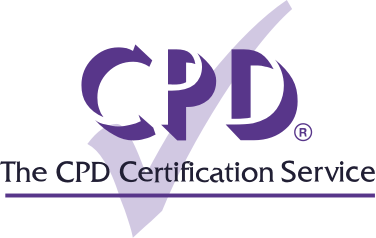This article provides a quick guide to what are CPD points, units and credits and how they relate to CPD hours. If you are looking for somewhere to log and record your ongoing Continuing Professional Development training in one simple place, please go to the free myCPD Portal record tool.
Improving your skills and knowledge through Continuing Professional Development is the responsibility of every professional across all industries. When completing CPD it is important to keep a record of the training completed each year, what learning objectives have been met, and what skills will be put into practice to improve and increase proficiency; you can track these with your CPD hours, points, units or credits. The training record kept by an individual is typically called a CPD record or portfolio.
What is a CPD record / portfolio?
A CPD record helps keep a track of your learning progression from year to year. It is an individual’s evidential documentation of their Continuing Professional Development obligations for their professional body or association. Contained within a CPD record would be the register of learning activities, such as training courses, workshops and educational events attended, the number of CPD hours / points the individual has completed for any given year, as well as a copy of the delegate CPD certificates for each activity. These CPD delegate certificates act as validation that the learning has been attended and completed.
Professional bodies review their members CPD portfolio to ensure they are meeting their annual Continuing Professional Development hours or points requirements. A CPD portfolio should demonstrate a range of different methods of learning and the different impacts on future capability. Always ensure that you keep your CPD portfolio up to date, as it is more difficult to record CPD at the end of the year, hoping to remember everything completed over the last 12 months.
What are CPD points, units and credits?
One of the most frequent questions about Continuing Professional Development is how CPD is recorded, and specifically “What are CPD points, units or credits?” and, “How do CPD points relate to CPD Hours?” With the increasing number of professional bodies in the UK and their varying annual requirements of Continuing Professional Development, a natural split in common language terms and expression has arisen. Different professional bodies use the terms 'CPD hours', ‘CPD points’, ‘units’ or ‘credits’ depending on preference, typically for historical reasons when initially implementing their Continuing Professional Development policy, rather than from any modern day strategic perspective.
How do CPD points, units and credits relate to CPD Hours?
It is considered across all industries that CPD points, units and credits all relate to the same thing, CPD Hours. What are CPD Hours? The definition of CPD Hours is the time spent for a delegate to be in “active learning”. Active learning defines the actual time spent learning something relevant for their Continuing Professional Development objectives. A great example of this would be 1-day accredited CPD training course. If the training starts at 9 am and ends at 5 pm, with a 1-hour break for lunch, the CPD Hours would be 7 CPD Hours.
For added information, it is estimated that 95% of all professional bodies use CPD Hours as their Continuing Professional Development measure and that where the terms CPD points, units or credits are used, these are in a typical 1:1 ratio with CPD Hours. By this, it is meant that typically 1 CPD point equals 1 CPD Hour.
Recording your CPD Hours
It is important for all individuals to manage their Continuing Professional Development effectively on a regular basis. The myCPD Portal is a free CPD record tool to help manage, track and log your ongoing Continuing Professional Development. Store your personal training record and CPD attendance certificates in one simple place.
A structured and consistent approach to recording your CPD Hours or points makes it easier to manage throughout the year. This also helps ensure that an individual attends training and events that are relevant to their desired improvement objectives, rather than simply attending courses just for general interest.
Recording your CPD points allows reflection on what has been gained from the learning activities and what can be implemented in day-to-day objectives, as well as what skill sets to develop next.
As a general rule, when recording your CPD hours in your CPD portfolio, it should contain the following information:- Date of CPD activity, Title of CPD activity, Brief description including learning objectives, the method of learning (i.e. training course, workshop, event, eLearning), number of CPD hours, points or credits and the overall learning outcome.
More about CPD
We hope this article on what are CPD hours and points was helpful. Please visit CPD Explained for more information on Continuing Professional Development. Alternatively please go to our CPD Industry Hubs to find courses, providers and events relevant for your Continuing Professional Development requirements.
Established in 1996, The CPD Certification Service has over 27 years’ experience providing CPD accreditation. With members in over 100 countries, our CPD providers benefit from the ability to promote themselves as part of an international community where quality is both recognised and assured.
If you are interested in offering training courses, seminars, workshops, eLearning, or educational events suitable for Continuing Professional Development, please visit the Become a CPD Provider page or contact our team to discuss in more detail.













